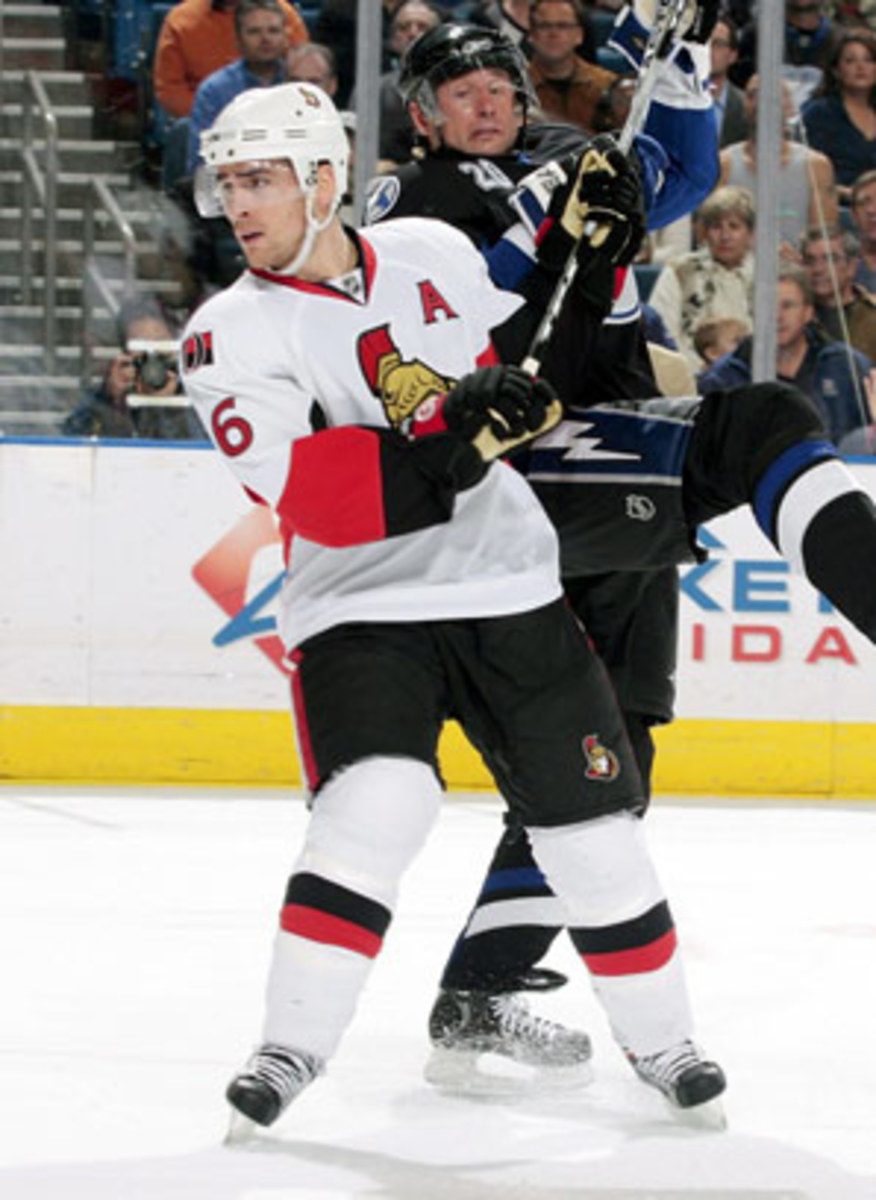Free agents most likely to bust
Considering what it would cost to fill up a tank in town, I paid my $40 and was happy to do it.
Of course, you know what's next. The same station is at $3.29 this week, and that $40 doesn't seem like such a great deal in hindsight.
Which brings me to the central theme of today's discussion: Though the concept of what qualifies as a good value is constantly shifting, the necessity of actually finding value is constant. And that's as true for NHL teams working under the constraints of a salary cap as it is for average Joes like us who are trying to afford a full tank without the lucrative benefits of free agency.
We're still more than two months out from the start of the new season, so at this point every team that played the free agent market probably feels like it got someone it wanted at a price it was happy to pay.
But did they?
History shows that more free agent signings lead to buyer's remorse than invites to speak at bargain hunter conferences. Odds are that there'll be a few spectacular busts among this year's crop. But whose deal will look the worst by the end of the season? The contracts of Jeff Finger (Toronto), Michael Ryder (Boston), Jose Theodore (Washington) and Ryan Malone (Tampa Bay) all have raised eyebrows, but they don't have the same whiff of potential failure as these.
5.Mark Streit(five years, $20.5 million)
The Islanders might as well have declined the extra man most nights last season, so ineffective was their 29th-rated power play. Streit, whose 34 PP points ranked second among all blueliners, seems like an ideal free agent addition. But did the success of the top-rated Montreal power play revolve around the 31-year-old, or was he the beneficiary of an established system that had led the league without much help from him the previous year? And how much of an asset will he be defensively considering he was minus-six at even strength for a team that was second overall in goals scored? Streit might earn his keep, but the potential for this deal to be an albatross is there.
4.Mike Commodore(five years, $18.75 million)
Go ahead. Roll those numbers around a bit, see if you can figure out exactly what the Blue Jackets hope to get from a deal that essentially makes a No. 1 blueliner out of a guy who's better known for a wheels-off hairdo and wearing housecoats than for anything he's done on the ice. It's not just the nearly $4 million per year -- the fourth-highest salary on the team -- but the term. This is the sort of deal that will hamstring Columbus GM Scott Howson when he gets serious about building a playoff-worthy defense.
3. Ron Hainsey (five years, $22.5 million)
Let's give credit where it's due. Hainsey worked hard at his all-around game while in Columbus, evolving from a defensive nightmare dumped onto the waiver wire into a player whose own zone play no longer negated what he was able to accomplish on offense.
That said, Hainsey's still a player better when used in a complementary role. Even the defense-starved Blue Jackets, desperate for someone with his transition skills, couldn't trust him with first-pairing minutes.
So it's hard to imagine what upside the Thrashers see that could justify making Hainsey the team's second-highest paid player, trailing only Ilya Kovalchuk in laughs generated on the way to the bank. He'll be a serviceable defender, but not an impact player ... and this is an impact-player contract.
2. Markus Naslund (two years, $8 million) and 1. Wade Redden (six years, $39 million)
No, you haven't stepped into the Wayback Machine. Rangers GM Glen Sather is at it again, signing name players who appear to be well past their best-by dates to contracts that are as generous as a no-bid Iraq contract.
Neither veteran is completely washed up, but at this point their downward slope looks pretty slippery. And it's worth noting that neither player generated much in the way of mourning upon leaving his previous employer.
Naslund, whose career has been in decline since the end of the lockout, posted just 55 points last season, his lowest total in a decade. His shot, long the bread and butter of his game, has lost its zip, and he's no longer capable of creating his own space. Brandon Dubinsky might help, but he's no Todd Bertuzzi, Naslund's running mate in his prime. Even over a short term, you need to be able to make things happen on your own to justify that kind of cash.
At least the Rangers will be able to remove Naslund from the books in two years. The Redden contract will haunt them until ESPN works out a deal to broadcast the NHL, or Paris Hilton is elected president, whichever comes first.
You could make the argument that no player's game declined more precipitously last season than Redden's. Issues away from the rink likely contributed to his on-ice malaise, but the tools that made him such a valuable commodity in his prime, particularly his hockey sense, seem to have deserted him. Long a staple of Ottawa's effective transition game, he was a turnover machine last season and his play away from the puck rendered him largely ineffective. He may be only 31, but he's got more than 800 NHL games of hard contact on his time card ... and he looks like it's taken a toll.
To be fair, any of these players could surprise and make their deal look like a bargain. Of course, there's still a chance that Jason Blake might score 40 this season and prove the Maple Leafs to be astute judges of talent for signing him to that five-year $20 million last summer, right?
Nah.





